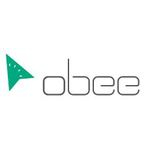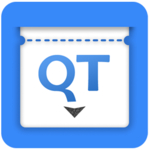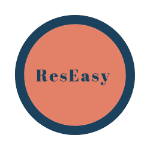List of Best Wait List Software
Showing 7 of 7 productsObee is a software solution for businesses of all sizes. With its user-friendly interface and powerful features, Obee streamlines operations and boosts efficiency for maximum productivity. Say goodbye to complex and outdated systems - Obee is the way...Read obee Reviews
NextMe is a solution for efficient and seamless customer service management. With NextMe, businesses can say goodbye to long wait times and confused customers and hello to a streamlined and hassle-free process. Revolutionize your customer service exp...Read NextMe Reviews
QueueTix is a ticketing solution designed to streamline the ticketing process for events of all sizes. Say goodbye to long queues and manual ticket sales, as QueueTix offers a hassle-free is a way to manage ticket sales and admissions. With its user-...Read QueueTix Reviews
Waitlist Me is more than just a software, it is a game changer for businesses of all sizes. This innovative platform helps streamline the waitlisting process, improving customer satisfaction and boosting efficiency. Say goodbye to long wait times and...Read Waitlist Me Reviews
Waitwhile is a unique is a way to manage your waitlists and appointments. Say goodbye to tedious and outdated systems, and hello to streamlined customer service and improved efficiency. With Waitwhile, you can revolutionize the way you handle queues...Read Waitwhile Reviews
QueuePad is a solution for streamlining your workflow and improving team collaboration. Designed with efficiency and convenience in mind, QueuePad allows you to effortlessly manage tasks, delegate assignments, and track progress. Say goodbye to disor...Read QueuePad Reviews
ResEasy is a solution to streamline and simplify your reservation process. With user-friendly features technology, ResEasy takes the hassle out of booking and managing your reservations. Say goodbye to manual processes and hello to efficiency with Re...Read ResEasy Reviews
- What Is Wait List Software?
- Top Reasons Why Businesses Need Wait List Software?
- What Are the Top Key Features of Wait List Software?
- What Are the Top Benefits of Wait List Software?
- What Are the Steps to Choose the Right Wait List Software?
- What Are the Types of Wait List Software for Different Industries?
- What Are the Technology Trends for Best Wait List Software?
- What Are the Deployment Options for Wait List Software?
What Is Wait List Software?
Waitlist software refers to a computer application or suite of programs that are purposefully developed to facilitate the management and organization of waitlists for various events or services. Wait lists are frequently employed as a means of organizing the sequence of service, as observed in many establishments including restaurants and other commercial enterprises.
Waitlist system commonly offers many functionalities, including the capability to facilitate reservations, visually depict the waitlist, notify consumers when their time arises, and generate statistical information pertaining to client demand.
Additionally, this software application has the capability to effectively handle the organization and coordination of bookings for exclusive occasions, such as those held in a theater, as well as facilitate the allocation of a restricted quantity of tickets or merchandise. The primary objective of wait list software is to enhance the efficiency and cost-effectiveness of customer service processes.
This system enables organizations to effectively handle extensive wait lists for services and guarantee optimal service delivery to clients. Additionally, this system aids managers and staff in monitoring client demand and trends, while also facilitating prompt customer feedback. Waitlist tool offers a diverse array of advantages for both customers and companies.
The use of this solution has the potential to enhance organizational efficiency in customer service management and mitigate the financial burdens connected with customer service provision.
Moreover, it has been observed that the provision of timely updates on wait times and services might contribute to the enhancement of customer happiness and the augmentation of customer loyalty.
Top Reasons Why Businesses Need Wait List Software?
1. Automate customer communications: Waitlist software has the capability to automate customer communication, resulting in time savings and enhanced customer experience.
2. Improve efficiency: The utilization of waitlist management software has the potential to decrease the duration required for the processing of a customer's request to be placed on a wait list.
3. Reduce wait time: The implementation of automated wait list software has the potential to optimize wait times, hence enhancing the operational efficiency of enterprises.
4. Create accurate customer lists: The utilization of the best waitlist software facilitates the expeditious and precise processing of client information, hence mitigating the occurrence of queues.
5. Improve customer satisfaction: The implementation of automated wait list software can effectively enhance customer satisfaction by instilling a sense of value and demonstrating a serious consideration of their requests.
6. Track customer preferences: Waitlist software has the capability to monitor and record customer preferences, hence facilitating businesses in tailoring their services to meet the specific requirements of their clientele.
7. Simplify wait list management: The utilization of waitlist management software can streamline the administration of client requests, resulting in time and energy conservation.
8. Increase waiting list visibility: The utilization of wait list software enables organizations to conveniently access and evaluate their customer's wait list, so significantly enhancing their level of responsiveness.
9. Streamline customer service: Waitlist tool facilitates prompt and effortless responsiveness to client inquiries, hence enhancing the efficiency of customer service operations within firms.
10. Automate wait list updates: The implementation of automated wait list software can effectively streamline the process by eliminating the need for manual updates, hence enhancing overall efficiency.
11. Create appointment scheduling: The integration of waitlist management software with appointment scheduling software facilitates enhanced efficiency and organization in customer services.
12. Enable wait list customization: Waitlist software provides businesses with the ability to customize their waitlist features, enabling them to cater to the unique requirements of their customers.
13. Increase customer loyalty: Waitlist system plays a crucial role in fostering customer loyalty through its ability to deliver timely service and promptly address consumer inquiries and demands.
14. Monetize wait times: The best waitlist software simplifies the process of capitalizing on wait times by providing the opportunity to provide discounts or loyalty programs to clients who demonstrate willingness to endure waiting periods.
15. Improve customer data management: Waitlist management software simplifies the process of capitalizing on wait times by providing the opportunity to provide discounts or loyalty programs to clients who demonstrate willingness to endure waiting periods.
What Are the Top Key Features of Wait List Software?
The top key features of wait list software include:
1. Automated Wait List Management: The utilization of wait list software enables the automated management of the wait list procedure, encompassing the monitoring of available slots and the arrangement of appointments, while also offering the flexibility to tailor scheduling rules according to specific requirements.
2. Online Access: The best waitlist software offers consumers a convenient web platform for the management and retrieval of waitlist data.
3. Automated Notifications: Automated alerts have the capacity to provide customers and staff with pertinent information regarding modifications that impact their position on the waitlist or the availability of appointments.
4. Customizable Forms: The utilization of wait list software may encompass the incorporation of adaptable forms, which serve the purpose of guaranteeing that users possess all the requisite information to facilitate their visibility to the appropriate healthcare professional or to obtain the sought services.
5. Wait Time Estimations: The Waitlist tool has the capability to furnish users with approximations of wait durations, so enabling them to effectively strategize and accommodate their requirements.
6. Detailed Reports: Waitlist management software has the capability to generate comprehensive reports, which facilitate a deeper comprehension of the waitlist procedure for staff members. This enhanced understanding enables them to deliver more proactive and efficient service.
7. Performance Tracking: Waitlist tool has the potential to offer valuable insights into the efficacy of waitlist procedures, hence facilitating enhancements in customer service.
8. Patient Accountability: The utilization of wait list software can effectively facilitate the provision of timely services to all patients who have made requests, through the implementation of patient-specific reminders and tracking systems.
9. Flexible Customizations: The customization of wait list software can be tailored to accommodate the distinct requirements of a particular healthcare facility.
10. Cost Control: The utilization of wait list software in healthcare facilities can yield cost savings by facilitating the control of personnel expenses and enhancing the management of time slots.
What Are the Top Benefits of Wait List Software?
1. Increased Forecasting Accuracy: Waitlist software has the potential to enhance staffing predictions by collecting data from consumers regarding their anticipated wait duration. This information can be utilized to effectively strategize and allocate staff resources in a manner that aligns with organizational requirements.
2. Improved Customer Experience: The implementation of a wait list system allows consumers to autonomously register for their appointments and receive text notifications, so obviating the necessity of physically waiting in a queue. This has the potential to enhance the overall client experience.
3. Enhanced Efficiency: Waitlist tool has the capability to automate several operations, including scheduling, check-in procedures, and appointment reminders. This has the potential to optimize operational efficiency and enhance workforce productivity.
4. Automated Waiting Room Management: The utilization of wait list software facilitates the effective management of the waiting room, so ensuring that clients are served in a fair and orderly manner based on the principle of first-come, first-served.
5. Increased Engagement: Waitlist system has the capability to offer interactive consumer engagement options, such as the implementation of polls or surveys, which serve the purpose of gathering data and enhancing comprehension of client requirements.
What Are the Steps to Choose the Right Wait List Software?
1. Identify your objectives: It is advisable to carefully evaluate and select the most appropriate type of wait list that aligns with one's specific requirements. Possible techniques for managing wait lists can encompass both digital and physical methods. This study aims to ascertain the frequency of utilization of the wait list and identify any potential further functionalities that may be required.
2. Research features and options: Conducting thorough study on the features and options provided by the best waitlist software solutions holds significant importance. Evaluate the characteristics and ascertain the level of customization inherent in the software.
3. Evaluate pricing: Assess the cost structures associated with various wait list software products. It is advisable to take into account both your budgetary constraints and the magnitude of your wait list in order to ascertain optimal value.
4. Read customer reviews: Examining user reviews might provide valuable insights regarding the usability and reliability of the software. Determine the primary aspects that clients found to be of utmost utility and assess the level of compatibility between the program and their organizational requirements.
5. Ask questions: Inquire with the waitlist system provider regarding the availability of a complimentary trial period and the compatibility of their program with pre-existing systems.
6. Implement the software: After selecting the most suitable wait list software for your requirements, the next step is its implementation. This may encompass staff training and the establishment of an online waitlist system for clientele.
What Are the Types of Wait List Software for Different Industries?
There are many types of wait list software available for different industries, all of which differ in terms of features and capabilities. Some of the most commonly used ones include:
1. Restaurant Management Software: These systems are well-suited for implementation in restaurants since they offer the capability for customers to participate in a virtual queue, access information on wait times, and receive notifications regarding predicted wait times. These functionalities are frequently accompanied by other attributes, such automated wait list administration and the ability to make reservations online.
2. Hospital Waiting List Software: These type of waitlist system are employed within healthcare facilities to monitor and oversee extensive queues, facilitating convenient access to data and streamlining administrative duties.
3. Spa Management Software: These technologies, commonly employed in spa establishments, enable patrons to participate in virtual queues, alleviate bottlenecks, and automate administrative duties.
4. Ticketing Software: Ticketing systems are utilized in various events and provide extensive functionalities, including virtual or on-site registration, automated wait list management, and notifications for wait times.
5. Education Management Software: These systems are well-suited for educational institutions since they facilitate wait list administration, student attendance tracking, class and exam scheduling, and automation of administrative activities.
6. Dental Practice Software: These systems, which are utilized in dental practices, offer several functionalities including appointment scheduling, management of wait lists, and automatic notifications.
What Are the Technology Trends for Best Wait List Software?
When selecting the best wait list software for your organization, the following technology trends should be taken into consideration:
1. Cloud-Based: Identify a resolution that exclusively relies on cloud computing infrastructure, ensuring universal accessibility to wait list data from any location. The capacity to seamlessly interact with other cloud-based services, like as Outlook, confers an additional benefit.
2. Automation: Automation provides a means of managing the wait list in a manner that is both more efficient and cost-effective. Seek out a resolution that provides automatic notifications, prioritization capabilities, and follow-up functionalities.
3. Reporting Capabilities: The presence of reporting features is crucial in high-quality wait list software. It is advisable to seek out solutions that provide real-time reporting capabilities, as this enables convenient monitoring and visualization of the wait list.
4. Mobile Access: An increasing number of wait list software solutions are now providing mobile applications that facilitate users in accessing the wait list from any device, at any given time. By considering these technology developments, individuals may make well-informed decisions when choosing the most suitable wait list software for their firm.
What Are the Deployment Options for Wait List Software?
The possible deployment choices for wait list software are contingent upon the underlying development approach, the scope of the target user population, and the allocated budget.
In a general sense, there exist three primary alternatives for the implementation of wait list software:
1. Web-Based Deployment: This alternative involves the deployment of the software on a web server, enabling users to access it through a web browser. This particular choice is particularly well-suited for firms of medium to large size, as it entails a small initial investment and can be readily adjusted in scale to accommodate varying consumer quantities.
2. On-Premise Deployment: This alternative necessitates the installation of the software on each individual user's computer or device. This particular alternative is well-suited for small-scale organizations since it eliminates the necessity of incurring expenses for a web server. Nevertheless, the task of ensuring the software remains current and operational necessitates a higher level of proficiency and ongoing upkeep.
3. Private Cloud Deployment: This approach entails utilizing cloud-based services for the execution of the software. Typically, the provision of these services is outsourced to a third-party entity. This solution is applicable to enterprises of various sizes, however it often necessitates a substantial initial investment to procure the requisite hardware and software components.







